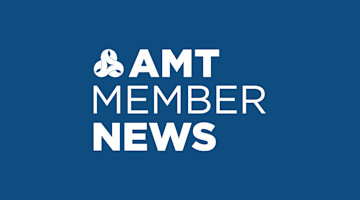In the past year, the number of firms going public via mergers with special purpose acquisition companies (SPACs) rather than conventional initial public offerings (IPOs) grew significantly. Additive manufacturing (AM) company Desktop Metal completed a very financially successful SPAC merger in December 2020, raising the profile of the AM industry in the process. Since then, two other AM companies, Xometry and Markforged, have also finalized SPAC mergers. Others have announced their plans to go public through this route, including Velo3D, which expects to complete a deal by the end of 2021.
In 2020, there were 248 SPAC IPOs in the United States, compared to 59 in 2019. Figures for 2021 are already higher, with 296 SPACs in the first quarter of 2021 alone. Investment in AM companies accounted for nearly $11 billion worth of these transactions.
“Although it is not clear how much longer the SPAC craze will last for AM companies, the manufacturing technology industry badly needs investment, so I think it has been good for the companies who have chosen this path to go public,” says Dave Burns, senior advisor to AMT, principal of Global Business Advisory Services LLC., and former CEO of ExOne.
“SPACs have allowed many smaller companies to raise needed capital to fund innovation and growth. The risk is on the investors, not the companies going public. I see this as further validating AM technology as it moves further away from prototyping and into metal production,” Burns says.
FACTs about SPACs
SPACs have been around for several decades, but most people did not hear of them until the past year. They allow companies to go public without following the traditional IPO route.
Merging with an SPAC allows companies to go public more quickly, and, because they are less regulated, there is far less financial scrutiny than in the IPO process, making them financially riskier for investors.
Without SPACs, few of the companies would have been able to access public markets; they’re simply too speculative. For example, the valuation of Desktop Metal was about 100 times the company’s sales.
SPAC mergers allow companies to market themselves directly to retail investors; mergers are typically followed by a private investment in public equity (PIPE), where investors can buy shares in the new business at below market value, rapidly raising capital.
One of the reasons that AM suddenly became so popular with SPACs was related to the pandemic and its lesson about the value of agile supply chains. AM proved itself as a technology that could make some needed parts and medical equipment quickly, on demand, and domestically. AM created masks, ventilator parts, and nasal swabs, among other things, that helped meet critical, life-saving supply needs.
“Some people believe the industry is currently in the midst of a hype phase, which has created inflated SPAC and IPO valuations, and it is possible that some SPAC acquisitions will not turn out to be successful. This will have the effect of dampening the market, so we’ll have to keep our eyes on what happens during the remainder of this year,” Burns says.
With its high level of interdependent technologies, advanced manufacturing is poised for exceptional growth and offers investors immense opportunity. From digitalization and artificial intelligence to additive manufacturing/3D printing and cognitive automation, many innovations have yet to be fully realized in manufacturing. When leveraged, these technologies offer new levels of agility, productivity, and profitability.
AMT – The Association For Manufacturing Technology connects advanced manufacturers and investors by illustrating data and trends in industry segments. We also provide investors with insights into the extensive opportunities that exist in this new manufacturing ecosystem. Even though individual network elements cannot stand alone as silos, these network elements contain both developmental opportunities and investment prospects.






